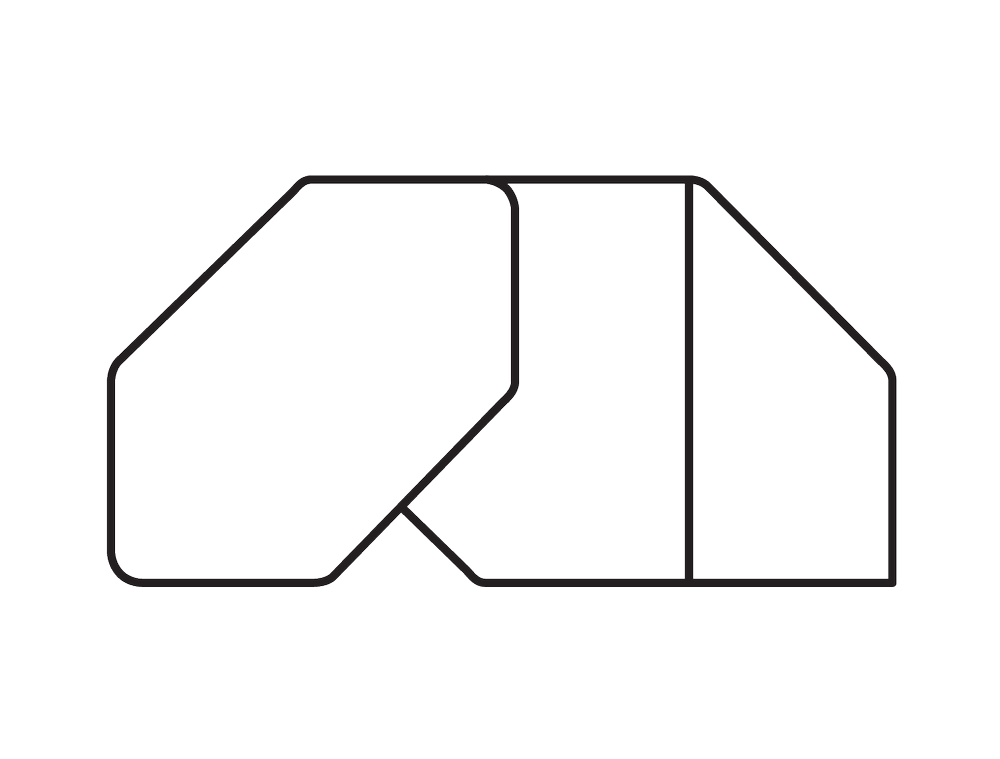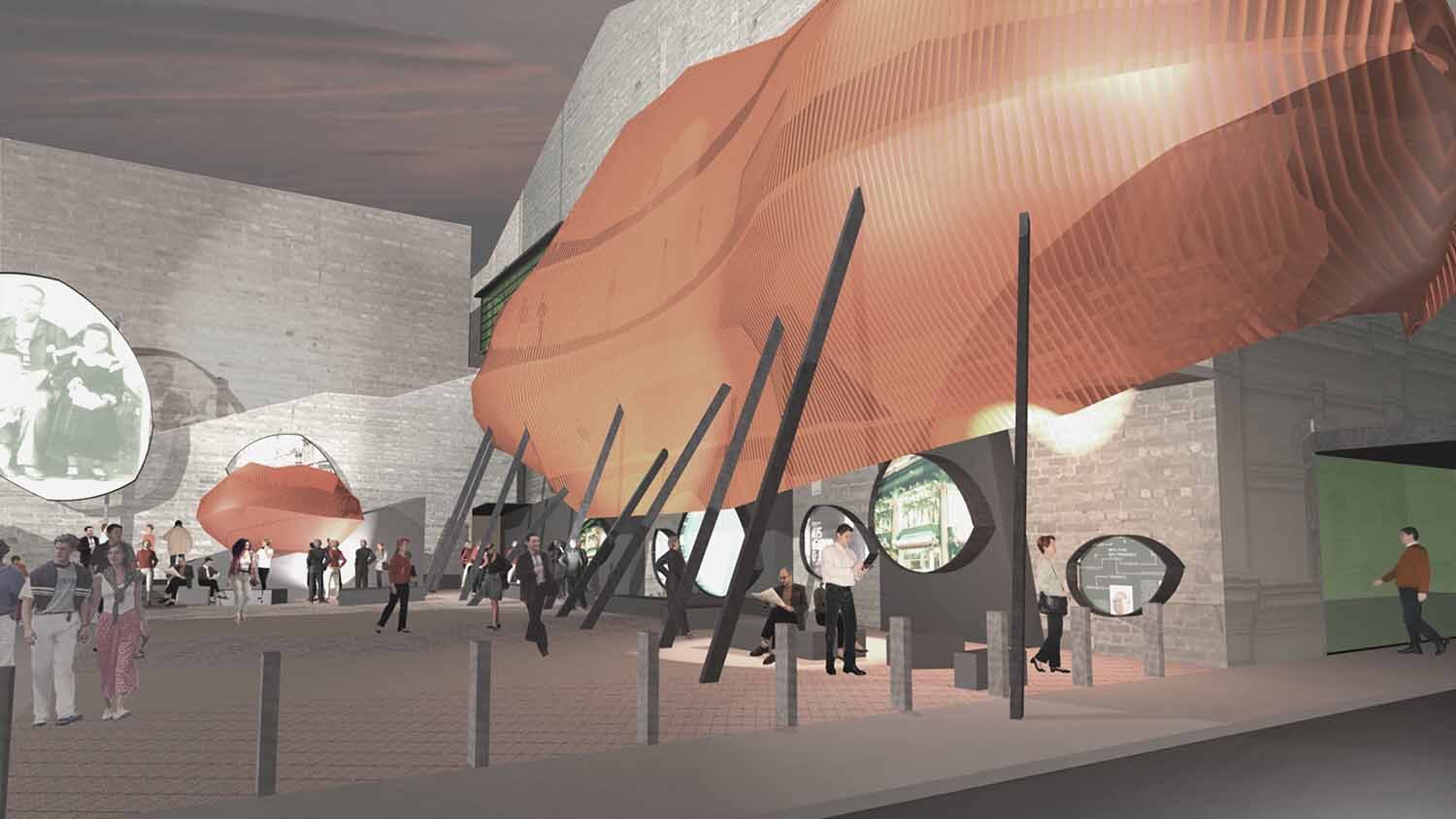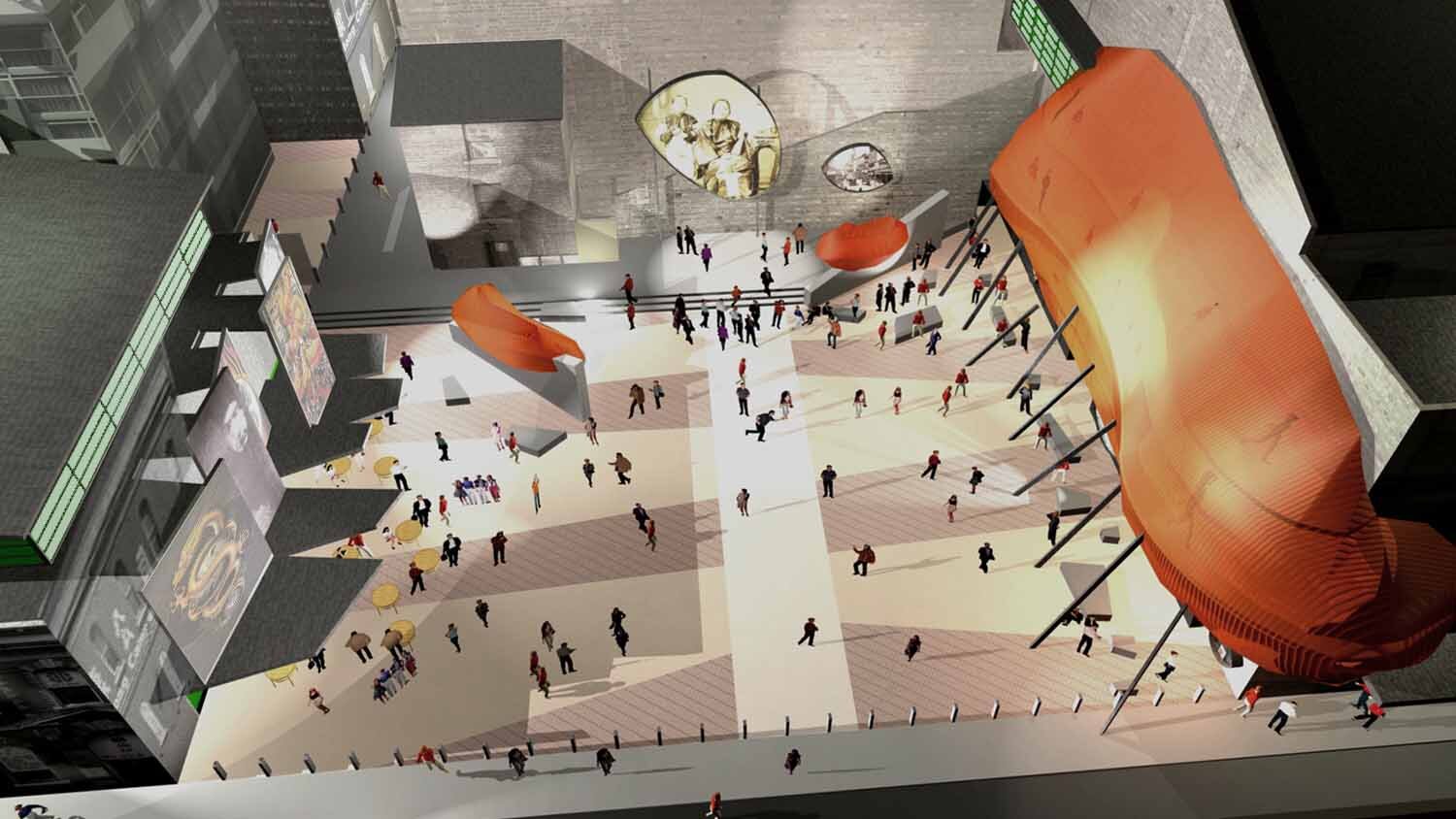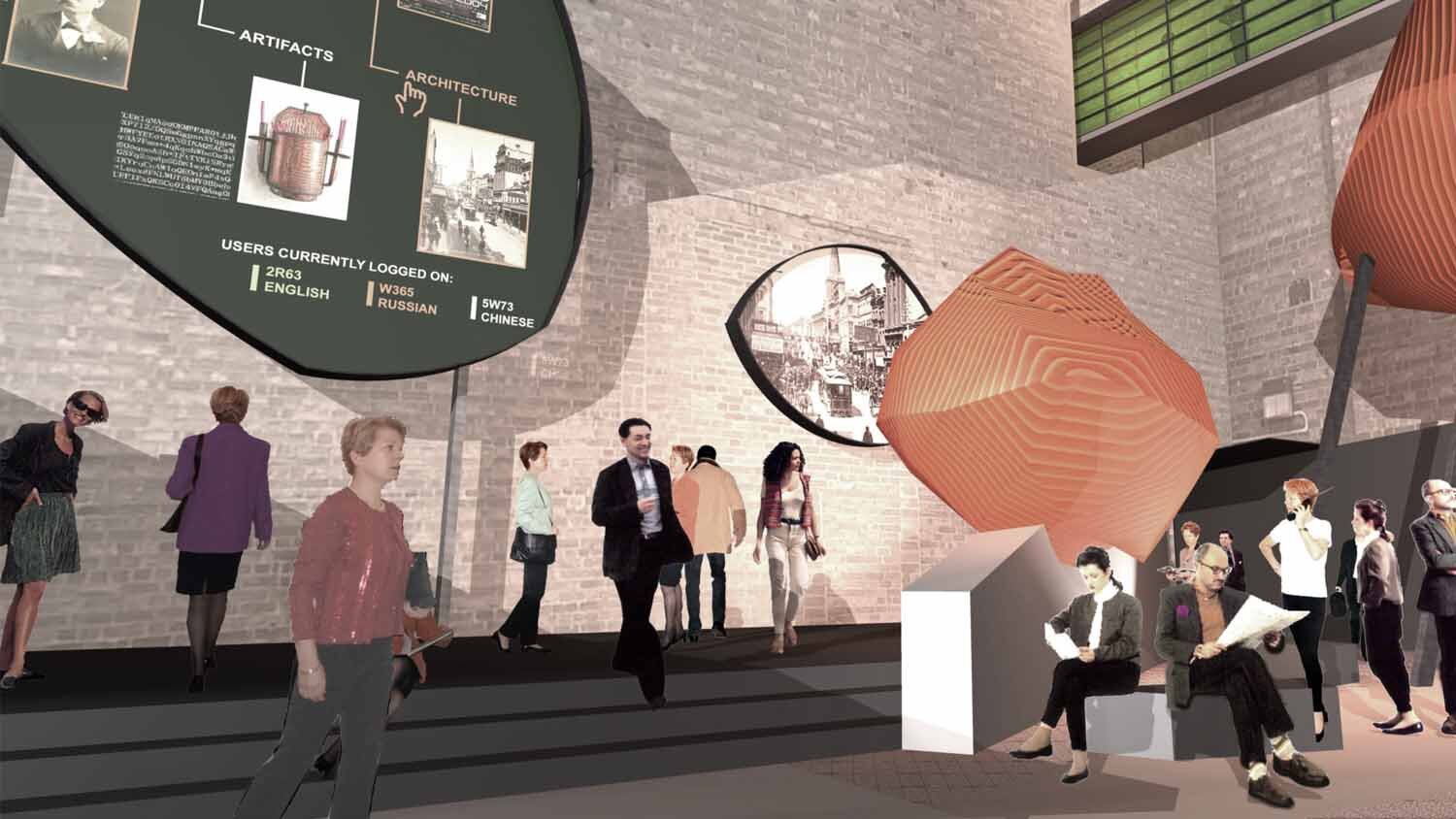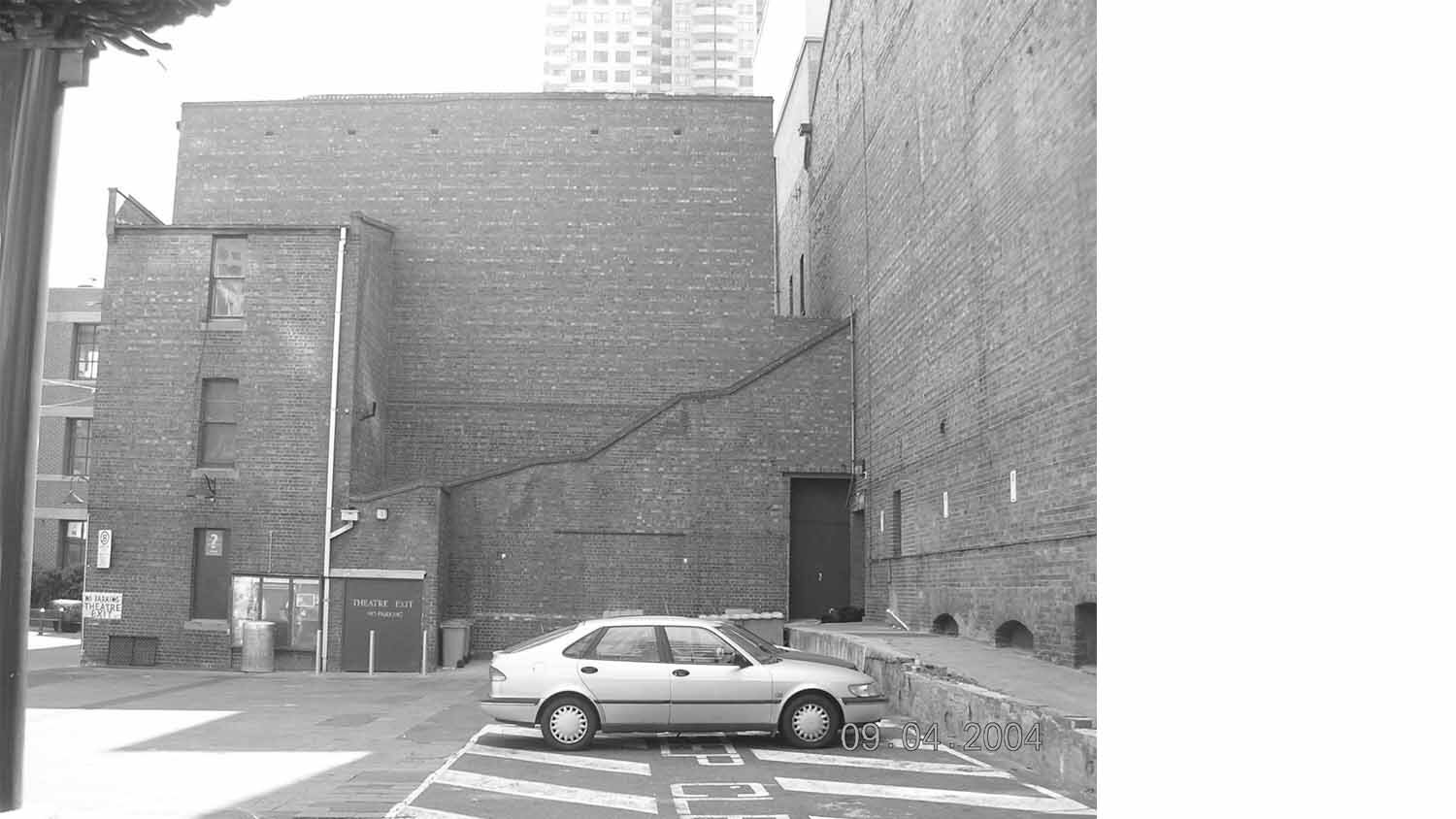ONLINE CHINATOWN - 2004 Fusedspace Design Competition
[short-listed]
Melbourne, Victoria, AUSTRALIA
Online Chinatown is a theoretical design concept that was put together for the “Fusedspace” design competition. Exploring the connection between virtual and physical public realm; the entry was shortlisted and received international attention.
The submission envisioned a virtual museum linking the existing Chinese Museum with virtual exhibits from around the world within an under-utilised adjacent public space. The original design response follows:
Chinatown in Lt. Bourke street, Melbourne is a place of significant historical and cultural importance to Australia. The bustling, restaurant lined street attracts tourists and locals who come to enjoy the food, smells, sights and sounds of the district. Chinatown has undergone many changes over the years, much of which is recorded in the Museum of Chinese Australian History located mid-way along this street.
An opportunity exists to expand the function of the Museum of Chinese Australian History and the use of public space within Chinatown. A vacant lot known as Cohen Square, adjacent the museum is under utilized and ripe for redevelopment. With the use of interactive technology and good planning,
this bland, un-welcoming space could be converted into a 24 hour international public attraction.
Cohen Square is currently used as a car park contained by the 12-15m high blank walls of an old theatre on the north and east sides. The western edge of the space is bounded by the side face of a two storey building occupied by a Chinese grocery store which is impervious to Cohen Square at ground level. A relatively new, 10 storey hotel has been constructed adjacent the rear end of the grocery store and facing Cohen Square. The southern side of the space is bordered by Lt. Bourke Street which acts as a central transit spine to the Chinatown district. This edge is lined with Chinese restaurants with offices above. The Museum of Chinese Australian History operates within a 3-storey converted warehouse that backs onto the old theatre. The main access to the museum is from a small laneway that runs into Cohen Square from the north.
Redevelopment of Cohen Square in this proposal aims to create a new type of public space that performs a variety of functions on a number of levels. This proposal embraces the notion of intellectual interaction within public space on a global scale. Not only should public space offer sensory stimulation, but also promote learning and communication amongst those who use it. Creation of a virtual, public museum and gallery in Cohen square could offer a new dimension of intellectual stimulation available within public space.
The proposal involves creating a greater physical link from the existing Museum to Cohen Square. This link would occur via a covered walkway to a multi-leveled gallery on the eastern side of the space mounted on a rear wall of the old theatre. The gallery structure would consist of three narrow platforms suspended above the ground housed under a free-form, tensile shell. Large screens mounted on the wall would act as portals to other virtual and physical public spaces around the world. Similar portals and information kiosks would be erected at ground level against walls and around the space. Visitors to the square could access cultural and historical data bases relating to Melbourne’s Chinatown and other Chinese centres globally. Tours could begin from Cohen Square continuing
through the new gallery space into the existing Museum and on to Chinatown itself.
A number of new technologies could be implemented to create a robust, low maintenance environment. The use of rear projection screens would ensure that sensitive equipment would not accessible from the public areas. Tours could be controlled by visitors using their own mobile phones and ‘Bluetooth’ technology to utilize equipment already in the hands of users and minimize the amount of destructible infrastructure provided. Control sets could also be made available through the museum for people without personal telecommunication devices.
Rare or fragile exhibits would be available for viewing at any time by anyone who visits the space. Chinese festivals and other events could be broadcast to Cohen Square so that time and distance would no longer be a constraint.
In addition to technological improvements, Cohen Square must be enhanced on a physical level to become a successful public place. It is important that people are drawn to the square to interact in 3 dimensions even if it is incidental. People will quite often enjoy being in a space with others even if they communicate with no-one.
This proposal looks at increasing the residential population around Cohen Square by redeveloping the upper level of the Chinese Grocery store, to the west of the site, into apartments. The ground floor could be adapted from its current use to incorporate a café that opens onto the square. By providing a ‘living’ face to the public space it becomes apparent to all passers by that ‘something is going on there’.
The successful integration of physical and virtual public space within Cohen Square essentially relies on the ability for humans to interact and participate on a passive and active level. By introducing technology that can incorporate a virtual theme corresponding to that of the physical space it exists in, a meaningful union of virtual and physical public space could be achieved.
